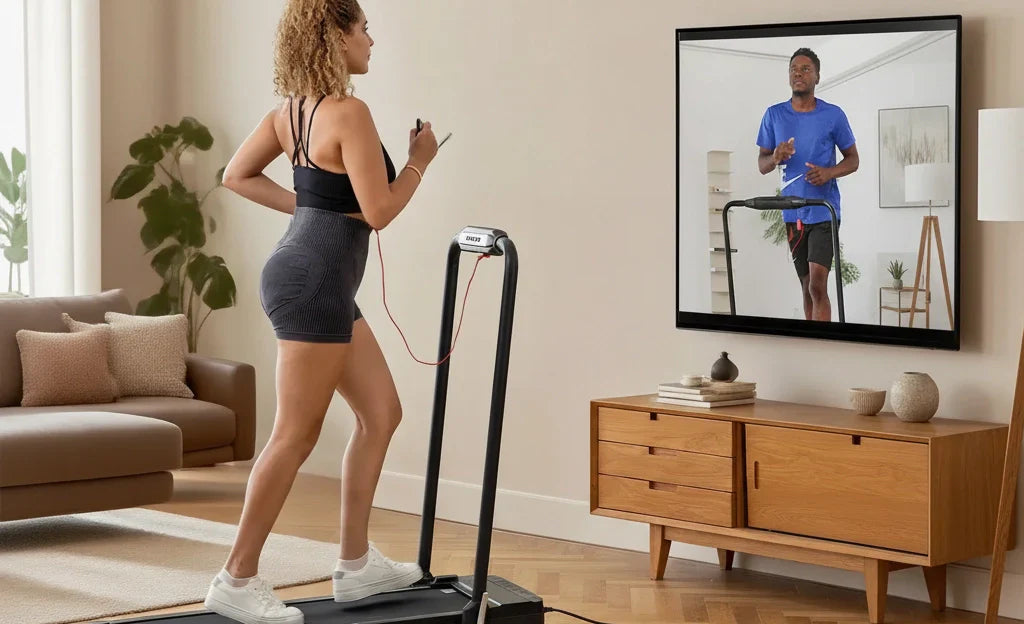Running is a familiar exercise for most people, and adding an incline to your treadmill makes it even more effective. It burns more calories, strengthens your legs, and makes treadmill walking far from boring.
But the truth is, pushing yourself too much on treadmills with incline can lead to potential risks. What are they, and how to fix them? Let’s find out in this article.
Risks of Using the Incline Too Often
Joint and Tendon Strain
Frequent use of the incline function on treadmills, especially at steep angles, can put excessive pressure on your knees, ankles, and Achilles tendons. Over time, this added stress can lead to inflammation, shin splints, or tendonitis, especially if you skip warm-ups or recovery days.
Lower Back and Hip Discomfort
Walking or running on a steep incline causes your body to lean forward for balance. When done too often, this posture can strain your lower back and tighten your hip flexors. As a result, you may experience lower back pain or poor posture even outside of your workouts.
Muscle Soreness
According to Everyday Health, applying extra resistance on home treadmills with incline can cause tiny muscle tears, which trigger the body’s natural repair process to heal and strengthen muscle fibers. This may lead to temporary soreness that eases as muscles recover. [1]
Muscle Imbalances
Incline training primarily engages your glutes and calves. If you rely heavily on incline settings and neglect flat-surface training, your quads and hamstrings may become underdeveloped. This imbalance can affect your running efficiency and increase the risk of injury.

What Are the Causes of These Risks
Incorrect Form
When using a high incline, people tend to lean too far forward, grip the handrails tightly, or shorten their stride. These postural mistakes shift the load unevenly across the body, putting extra stress on the lower back, hips, and knees over time.
Skipping Warm-ups and Cool-downs
Without gradual warm-up and cool-down phases, it is easy to increase the chance of strains or stiffness as your body doesn’t have enough time to adapt to the incline’s demands.
Inconsistent Workout Variety
Without incorporating flat or interval sessions, you can overdevelop certain muscle groups while neglecting others.
Insufficient Rest and Recovery
Failing to include rest days prevents your muscles and joints from fully recovering, which is one of the main drivers of overuse injuries.
How to Use Incline Safely
Keep It Moderate: A 5–7% incline is enough to boost intensity without overstraining your joints. Save higher inclines (10% or above) for short bursts or interval training.
Watch Your Posture: Keep your chest up and shoulders relaxed. Avoid holding the treadmill handles or leaning too far forward.
Mix Flat and Incline Sessions: Alternate between exercising on a flat surface and a moderate incline. For example, do 5 minutes incline and 5 minutes flat, and repeat. It keeps muscles balanced and prevents fatigue.
Take Recovery Days: If you feel tightness or soreness in your calves, hips, or lower back, take a rest day or stretch those areas thoroughly before your next session.
Incorporate Other Exercises: Treadmills mainly target your lower body and core. Pair it with upper-body exercises like overhead press and reverse fly to build overall strength.
Final Thoughts
Treadmills with incline are excellent for improving overall health, building endurance, and burning calories, but the key lies in intensity. Overusing the slope can strain your joints and create muscle imbalances. Learning what causes these risks and tips for safe workouts in this article can help you stay fit effectively and safely. Just start small and listen to your body.
For home treadmills with incline, try the Tousains foldable treadmill with incline FIT-7s. It connects to the Tousains app with courses for various goals. The incline levels are designed for all fitness levels, so you can enjoy safe, immersive workouts at home.
FAQ
Is incline walking better than running?
It depends on your goals. Incline walking is lower-impact and burns calories efficiently while protecting joints. Running, on the other hand, builds cardiovascular endurance faster. For joint-friendly fat burn, incline walking can be an excellent option.
Does walking on an incline build glutes?
Yes! Incline walking targets your glutes, hamstrings, and calves more than flat walking. For better muscle tone, keep your incline around 8–10% and walk at a steady pace for 20–30 minutes, 3–4 times a week.
References:
[1] https://www.everydayhealth.com/health-impacts/what-causes-leg-pain-on-a-treadmill/


